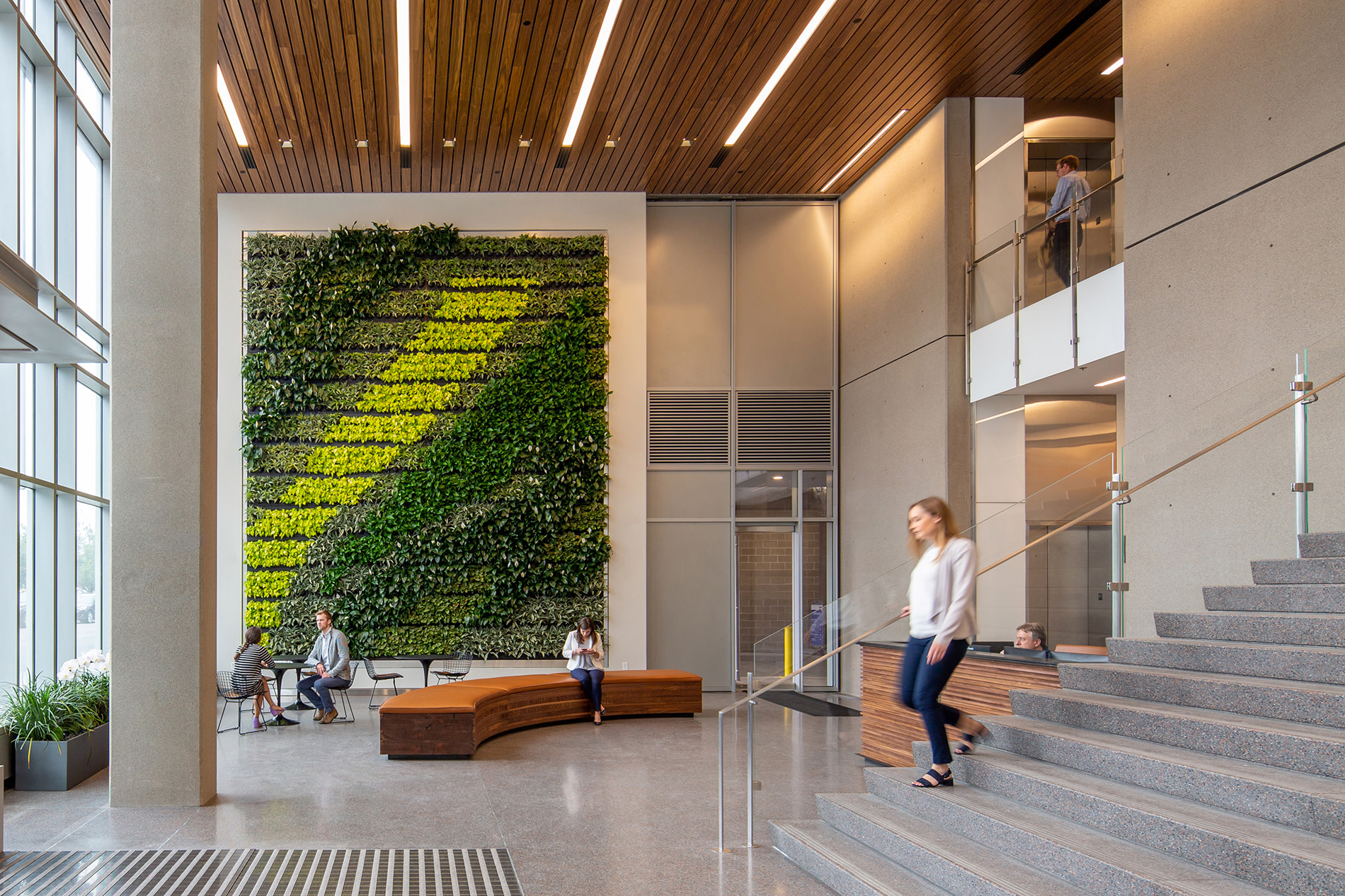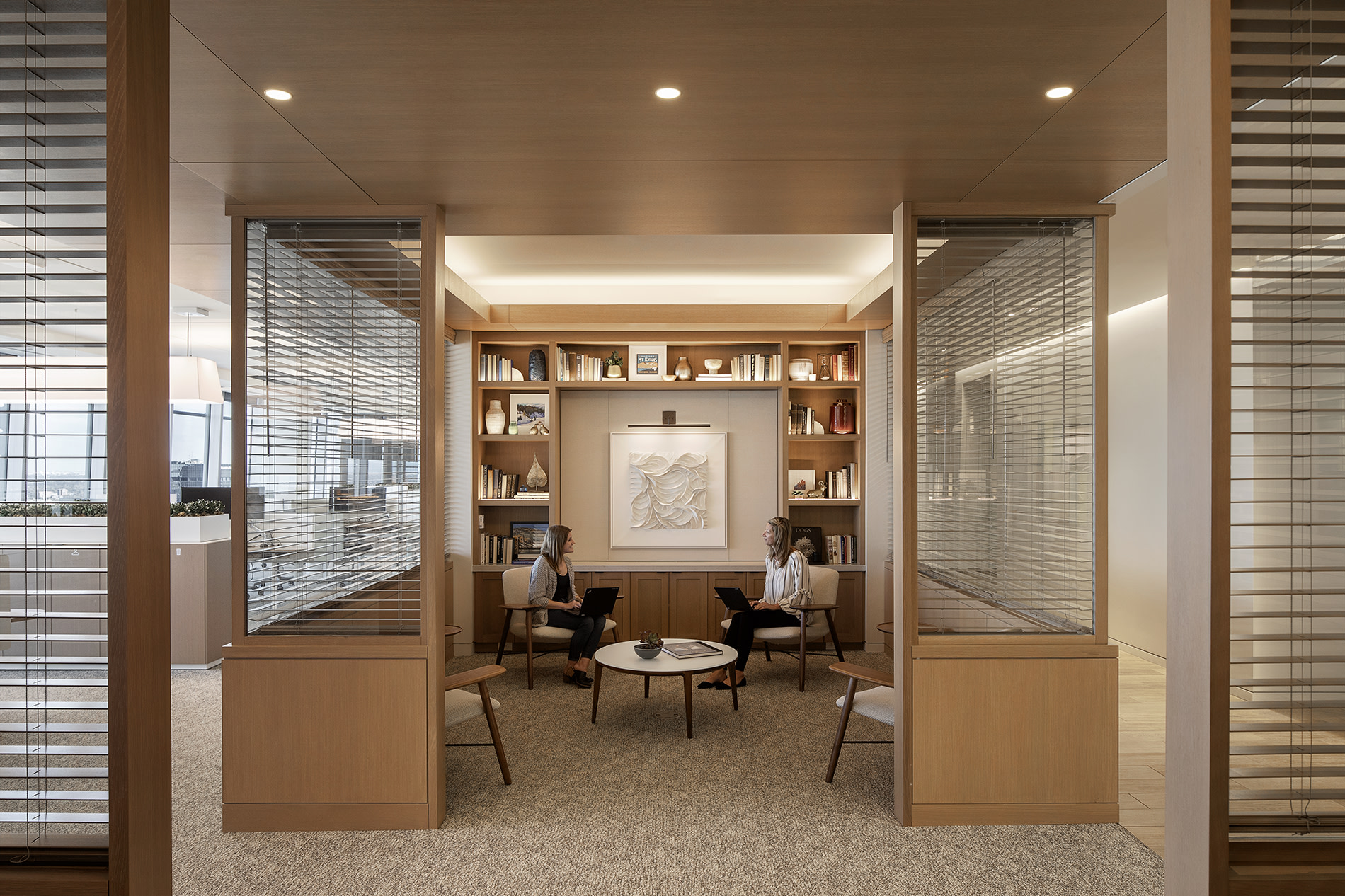
As designers, we are innately problem solvers. Today, we are met with many challenging problems as we look out into a fundamentally changed world, asking questions surrounding our built environments and their futures. How can we bring people back together—safely, comfortably, and in a way that promotes equity? What is it going to take to bring people back to the office? Why do people come to the office and what value does the workplace actually provide?
To say this year thus far has been difficult would be an understatement. Universally, we are faced with a global health crisis, social injustices, and economic uncertainties that have shaken us to our cores. But with challenge comes an opportunity for change, and change is essential for growth. As we all look for how to move forward from here and return to our respective workplaces, we have an opportunity to take a pause and reaffirm our needs and our values. One unwavering, universal theme that has emerged from these circumstances is the need for human connectivity. By nature, we are community driven beings. As advanced as technology has become, and as productive as we’ve proven to be, it will never replace the innate need for connection with one another.
The ability of the workplace to offer opportunity for collaboration, innovation, and connection is the reason it has been and will endure as a part of our communities, cultures, and businesses. As we reengage our workplaces, and reimagine them for a changed world, our role as designers and architects will be to bring out the essence of what makes individuals feel comfortable, connected, and secure in the workplace. We must ask ourselves: how can we bring people back together and what do comfortable, safe, and inclusive spaces look and feel like?
Historically, design has always had an impact on how humans interact and gather. Now, our role ahead has an undeniable call to action to responsibly create spaces that provide comfort and human connection, in environments people will feel safe. This need for human connection and comfort has brought about a wonderful surge of collaboration across the field of design, facilitating engagement—both internally and with our peers—to examine what will come next. To be effective stewards of the built environment, provide support, and create solutions for the future, we must be willing to listen, learn, and understand each other’s concerns and values.
Based on our observations and conversations, we have a sense that enduring workplaces will provide employees comfort, safety, and security, above all else. Comfortable spaces make people feel whole. When we design for comfort, we expand beyond meeting the needs of the individual to create generous spaces that are in service to the greater community. We create spaces that make people feel good and healthy within their environments. Human comfort in the workplace is no longer an option—it is essential. Three design strategies for bringing people back to the workplace in a safe and supportive way include: legibility and predictability, connectivity, and flexibility and choice. These are foundational principles of great design that are now more important than ever.
Legibility and Predictability
In our firm we have a belief that great spaces come from a principle-based approach in pursuit of effortless, highly legible, and predictable spaces. Specific to workplace design, when the convergence of program, structure, and circulation are all considered, the results of the design become self-evident. Clear circulation reinforces openness and visibility within the office space, which creates a feeling of familiarity. There is no need to zig or zag for fleeting interest when clear circulation allows an individual to feel in control of their travel path and secure in where it is going to lead. Similarly, openness and visibility within the office reinforce connection, transparency, and equity for the individual employee at all levels.
Entry and arrival points are the gateway to our workplaces. When considered in connection to their site context, these critical moments of welcome can have powerful, positive impacts on how employees and guests alike feel upon arrival and departure. You walk a little taller when the space around you is empowering. These receiving zones carry the important role of communicating ‘you belong’ to employees and visitors. When designed right, they can simultaneously provide a desired greeting and communicate a company’s mission, culture, and values.

Connectivity
While this tenet of good design has been known and practiced in office design for some time, we foresee the reach taking on greater objectives. Connection to nature and fresh air will be imperative, a must have, not a nice to have. Office environments of the future will be designed so people can feel connected and engaged—with their colleagues, their work, the outdoors, and the broader company mission. Meeting and collaboration areas will continue to be vital connector zones that produce the energy, innovation, and social interaction we are all craving, but they will be revisited with a new outlook allowing for ample personal space within individual work zones. When we design individual workspaces that acknowledge and respect the need for personal comfort, we can empower employees and further facilitate connection. In the technological spirit, equitable access to technology will need to be examined so all employees stay equally connected whether working from home or in the office, as both worlds will remain merged from here forward.

Flexibility—Choice and Freedom
As the current environment has proven, we can work remotely, to some degree. Looking ahead, employees may have the option to spend a portion of their hours at home (hopefully without homeschooling, fear of a pandemic, and conflicting Zoom calls). What elements will office environments need to incorporate to provide employees the flexibility they experience working from home? Perhaps a garden patio will now be a program requirement, offering an outdoor space to grab a coffee with a colleague or check emails over lunch with a dose of fresh air. A soft seating lounge group in the café composed of carefully selected furniture that is the right scale and comfort would provide another inviting option. We might consider trading in one showcase stair for two modestly designed open stair connections within employee zones to truly facilitate engagement and movement. Ideally, we’ll see wellness zones incorporated in such a way that provide employees a dignified space for personal health and wellbeing. The future office is not irrelevant, but to be meaningful, it must adapt to accommodate the level of comfort, safety, and flexibility that we feel in our work from home spaces.
Design has always had the wonderful ability to impact change and elevate the human spirit, and the foundational principles of predictability, connectivity, and flexibility are vital to creating enduring and uplifting spaces. While ‘uncertain’ has become the new four-letter word of our time, we are choosing optimism in the certainty of what lies ahead. We will see our way through this, and the world of design will be better for it. Change will take place. Comfort will be essential. We will emerge more connected, more gracious, and enlivened with a renewed spirit to serve the greater good.
